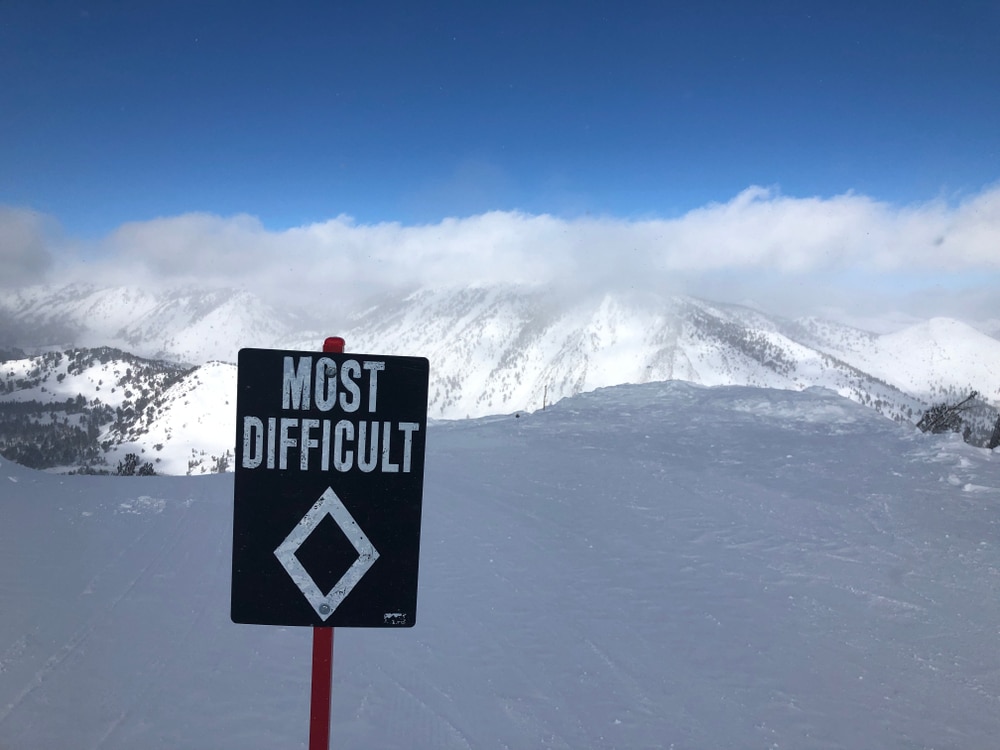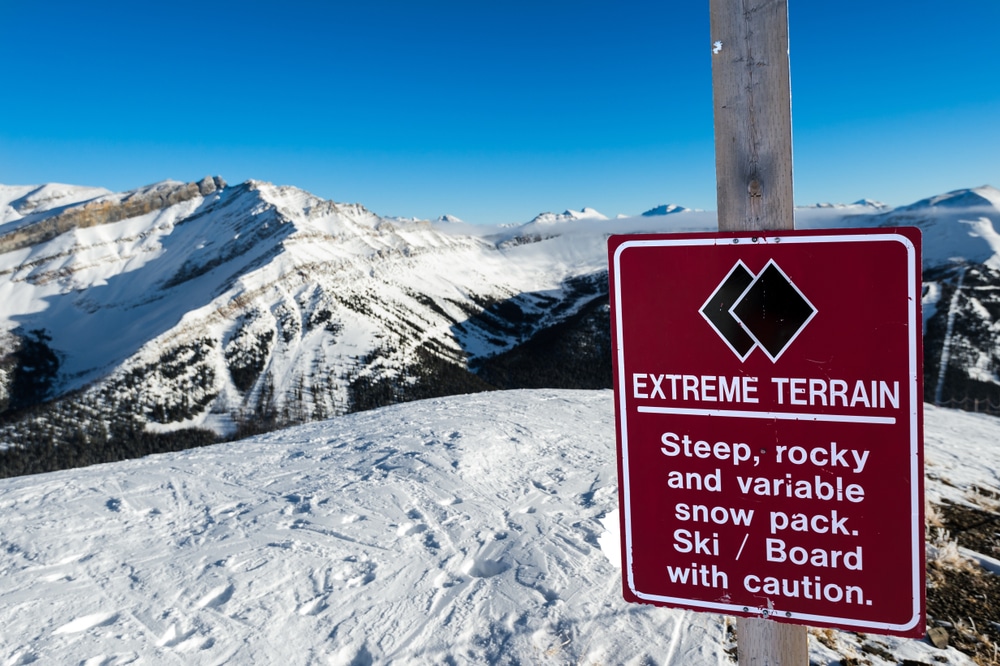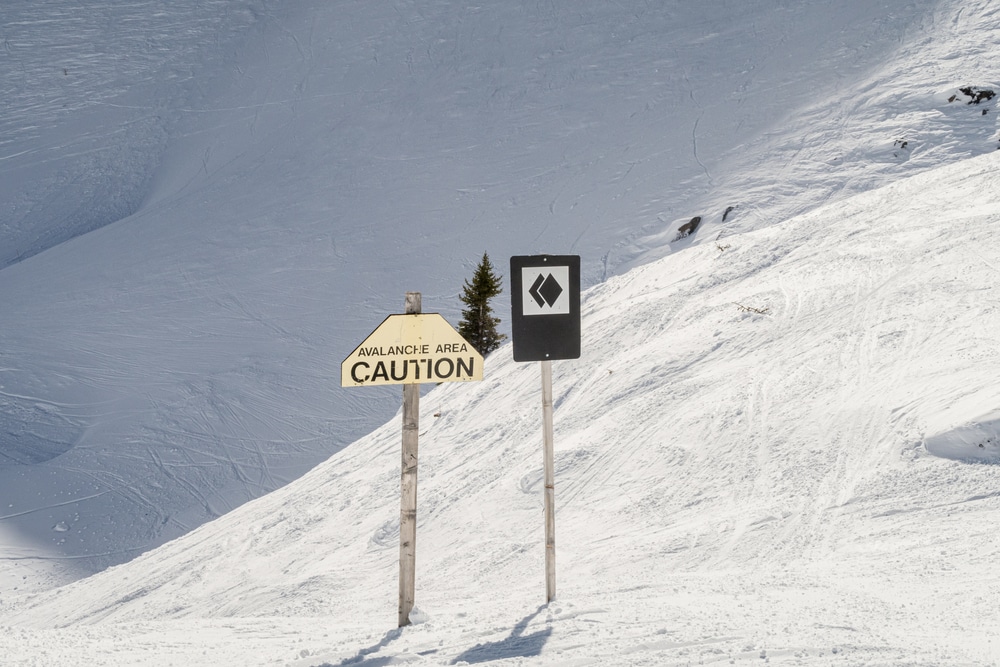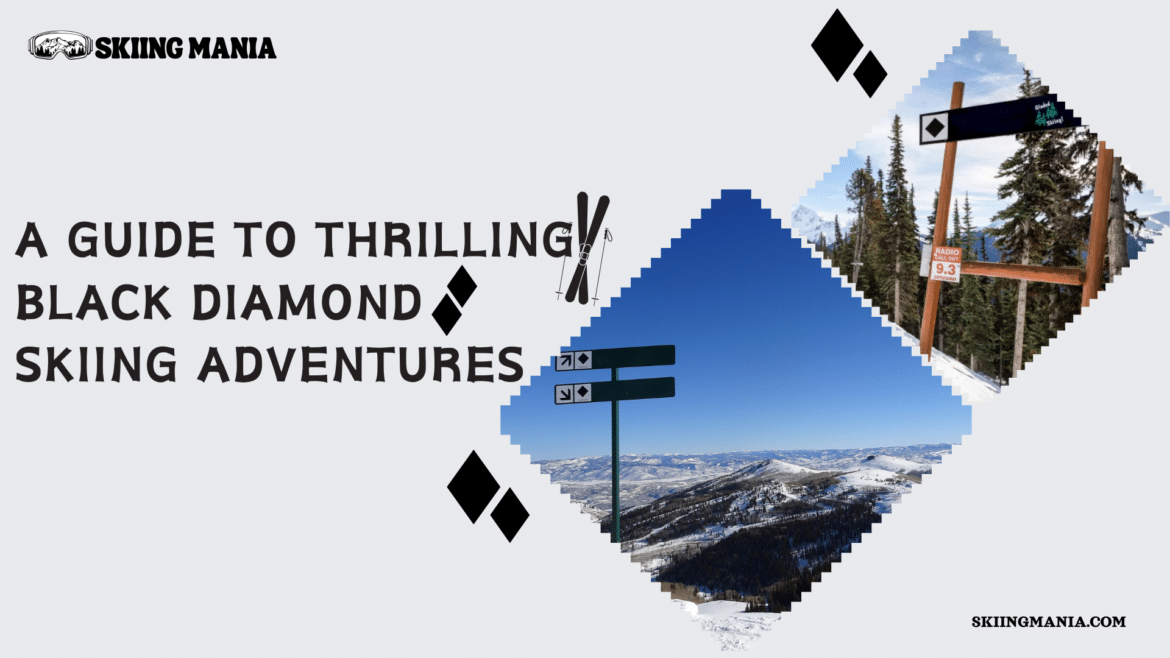Table of Contents
Ever heard of skiing levels? Black diamond skiing is a really popular kind of skiing level. When you’re preparing your ski trip packing list, you must have an idea of the various ski areas you are deciding to ski in. You must be wondering what a black diamond ski slope is. You don’t need to worry anymore. As, we are going to be your guide to understanding the black diamond terrain. So, let’s not waste any further time and delve straight into the facts.
What is Black Diamond Skiing?
Folks, the most difficult terrain on ski slopes is designated with a black diamond symbol, which refers to black diamond skiing. These slopes are meant for experienced skiers looking for an exciting experience beyond intermediate blue square runs. The inclines on these slopes range from 40% to 60%. They frequently offer skiers a range of challenges, such as steep inclines, trees, rocks, and small paths, making navigating thrilling and challenging. Black diamond courses can include a wide range of snow conditions, from powder to icy spots or hard-packed snow, so skiers must modify their tactics accordingly.
Black Diamond Ski Runs
Certain resorts have double black diamond runs for the most skilled skiers looking for an even bigger challenge.
- These runs are designed for expert-level skiers who are self-assured; they feature narrower chutes, more obstacles, and steeper slopes.
- Some ski slopes also have triple black diamond runs, although these are exclusively for the most experienced skiers and the most difficult terrain.
- Black diamond slopes need experienced skiers to be well-prepared, have great skiing techniques, and use caution when navigating these thrilling but difficult courses.

Double Black Diamond Skiing
Only the most skilled skiers may attempt double black diamond skiing, the ultimate challenge for experienced skiers.
- These heart-pounding runs come with intimidating obstacles, such as obligatory cliff drops, towering moguls and tiny chutes, and steep inclines that exceed 60%.
- These dangerous terrains are only attempted by the most accomplished double black diamond skiers, who must use precision control, terrain adaptability, and lightning-fast reflexes to negotiate the harsh slopes.
- Furthermore, achieving a double black diamond ski requires extraordinary technical proficiency, great stamina, and physical conditioning.
These expert skiers must be flexible and sturdy enough to tackle the hardest descents in the Alps because they often have to fall and get back up in the extreme terrain.
Triple Black Diamond Skiing
Triple black diamond ski slopes are the pinnacle of difficulty and excitement in skiing. These harsh environments are not for the weak of heart; they can be found in a few places in North America, including Montana’s Big Sky Resort.
- Due to their steep inclines exceeding 80%, these slopes require even the most experienced skiers to possess extreme ability, precision, and bravery.
- Their steep, continuous pitches, intricate routes, and high-consequence terrain, which frequently include intimidating obstacles like cliffs and hills, define them.
- A triple black diamond skiing hill requires mental and physical toughness to navigate.
- Aside from extraordinary skiing skills, skiers who dare to tackle these dangerous runs must thoroughly understand mountain safety and avalanche awareness.
- Going into these wilderness or isolated areas needs meticulous planning and preparation and the appropriate equipment to meet the obstacles.
- A triple black diamond ski slope is a badge of pride for individuals who want the ultimate skiing challenge and an adrenaline rush despite the accompanying risks.
It is a monument to their talent and boldness in the face of nature’s most difficult barriers.

Does the Trail Pose a Serious Threat to Skiers?
There’s no denying that Black Diamond skiing tracks are more dangerous for skiers because of their difficult terrain.
- These runs require high skiing control and competence because of their steepness, hazards, and small chutes.
- While skiing inside resort limits can reduce some risks, going onto black diamond runs requires carefully evaluating one’s skill level and awareness of potential hazards.
- Single and double black diamond paths differ in difficulty; double black diamond routes are only found in the most severe terrain.
- Skiers must be confident and have advanced skills to travel safely on these runs.
- Moreover, going into backcountry areas outside of resort boundaries increases the risk, particularly of avalanche hazards.
- Proper training, avalanche safety equipment, and familiarity with snow conditions are essential for skiers looking for such challenges.
Although black diamond skiing slopes are challenging to master, there is a risk to skiers that should not be disregarded.
Preparing for Black Diamond Ski Slope
It takes a combination of talent growth, technique refinement, and mental fortitude to prepare for a black-diamond skiing slope. Here are some important things to pay attention to when you move from softer slopes to more difficult terrain.
Control and Technique
Gaining control over your skis requires practice. To improve, spend time on a range of slopes.
- By keeping your hands in front of you and bending slightly forward, you can concentrate on keeping your balance and stance correct.
- This uniform weight distribution over your skis aids in control, particularly on steeper slopes.
Adaptability
Black diamond slopes frequently have a range of terrain features and impediments.
- Practice skiing skills, such as making quick and rhythmic turns and navigating ice and powder snow.
- Your knees and ankles must be flexible to absorb drops and bumps on the slope.
Speed Control
Improved speed control is necessary when the terrain becomes more difficult.
- To properly control your velocity down the slope, work on modifying your pressure, turn shape, and edge control.
- This aids in safely navigating obstacles and thinner pistes.
Knowing the Terrian
Know the terrain you’ll be skiing on, especially if you’re going into backcountry regions.
- For information about avalanche safety and how to ski in more isolated and perhaps dangerous environments.
- Also. consider enrolling in guided backcountry trips or taking classes from trained instructors.
Developing Confidence
Gaining skills is not as important as developing confidence.
- Take your time and work your way up the black diamond skiing slopes you attempt.
- Acknowledge that confidence increases with time spent on the mountain and experience.
- Take your time and make sure you feel comfortable and capable by moving at your own pace.

Final Thoughts
Summing up, black diamond skiing includes some of the most difficult terrain in North American ski resorts. Black diamond ski slopes are for expert-only skiers looking for an adrenaline rush; they feature steep and narrow chutes, dangerous moguls, and unpredictable snow conditions.
In conclusion, black diamond terrain, the highest-ranking category in the system employed by ski areas, is a challenging course for experienced skiers that highlights the pleasure of taking on some of the world’s most difficult slopes.
MASTER THE BLACK DIAMOND SKILL!

